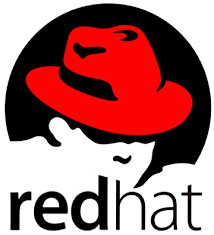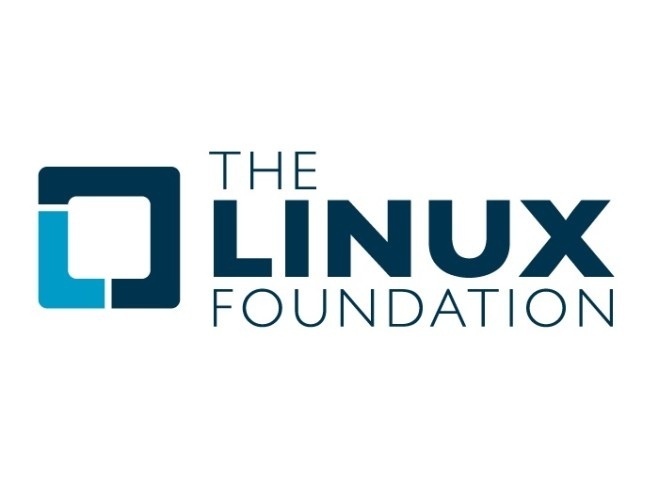Docker
See the following -
Is Use of the Open Source GPL License Declining?
 A little while ago I saw an interesting tweet from Stephen O'Grady at RedMonk on the state of open source licensing, including this graph. This graph shows how license usage has changed from 2010 to 2017. In reading it, it is clear that usage of the GPL 2.0 license, one of the purest copyleft licenses around, has more than halved in usage. According to the chart it would appear that the popularity of open source licensing has subsequently shifted to the MIT and Apache licenses. There has also been a small increase in GPL 3.0 usage. So, what does all this mean?
A little while ago I saw an interesting tweet from Stephen O'Grady at RedMonk on the state of open source licensing, including this graph. This graph shows how license usage has changed from 2010 to 2017. In reading it, it is clear that usage of the GPL 2.0 license, one of the purest copyleft licenses around, has more than halved in usage. According to the chart it would appear that the popularity of open source licensing has subsequently shifted to the MIT and Apache licenses. There has also been a small increase in GPL 3.0 usage. So, what does all this mean?
- Login to post comments
Jim Zemlin: 2014-The Open Source Tipping Point
For the last ten years open source has expanded into more and more segments of the computing industry. But as we review 2014, a new story emerges: software development has fundamentally shifted toward an open source model. Especially for the infrastructure software used for scale-out computing, open source is the de facto choice; in fact, it’s virtually impossible to find examples of scale-out infrastructure that is not open source. Read More »
- Login to post comments
Kubernetes Supports Container Management for HIT Infrastructure
Open source clouds, virtualization, and application management efforts are growing in healthcare as vendors are using tools that are meant to enhance deployment and management of applications. Kubernetes is one such tool that is becoming more popular in HIT infrastructure...
- Login to post comments
Microsoft Azure container team releases first open-source developer tool
At CoreOS Fest in San Francisco, Calif., Microsoft's Gabe Monroy, lead project manager for containers on Microsoft Azure, announced the release of Draft, a tool to streamline development of applications running on any Kubernetes cluster. With Draft, which Monroy said was the first open-source program to emerge from the Azure Container group, developers can use two simple commands to begin hacking on container-based applications with no knowledge of Docker or Kubernetes. "In fact," Monroy claimed, "developers don't even need Docker or Kubernetes installed to get going"...
- Login to post comments
Microsoft Really Does Love Linux
What a difference 15 years makes. Back in 2001, former Microsoft CEO Steve Ballmer was busy branding Linux "a cancer" during the height of the software giant's domination of desktop computing. Fast forward to 2016 and you'll find Microsoft confessing its love for everything open source and Linux. It's a stunning turnaround that's now backed up by Microsoft's serious attention to the open source world...
- Login to post comments
New Open-Source Tool Makes It Easy To Tap Into Docker, The Cloud’s Next Big Thing
...[N]ow Docker has a helper of its own, an open-source project called Panamax that makes it easier to use Docker on the cloud. Docker packs applications into software “containers,” which contain everything required to run the application...
- Login to post comments
Open Source And Linux In 2014
In today's open source roundup: Looking back at open source and Linux in 2014. Plus: Switching from Apple laptops to Chromebooks, and the best gaming mouse for Linux?...
- Login to post comments
Opensource.com Publishes 18 Interviews with Speakers of the Upcoming OSCON Conference
For those of you who have not noticed yet, the folks at Opensource.com just completed the publication of an entire series of interviews with speakers at the upcoming O/Reilly OSCON conference. This conference is one of the most important and interesting open source conferences of the year and the wide variety of interviews conducted which show the depth and breadth of the conference topics. `
- The Future Is Open
- Login to post comments
Pandemic Stress Test: The Open Source Cloud Is Up To The Challenge
 We all know that modern business has become a rapid-response environment. Never before have we had the number of IT resources at the tips of our fingers as we have today, and most of them are enabled by the cloud. When we refer to "the cloud", we may be talking about several computing concepts, but typically the cloud consists of a set of remotely-hosted resources and services, from web pages to mobile apps or even traditional desktop applications. The cloud continuously transforms our connectivity on a global scale. It can be found everywhere, from our vehicles to our phones and even to our watches. From what we are witnessing right now, the cloud may ultimately safely carry numerous organizations through a global crisis.
We all know that modern business has become a rapid-response environment. Never before have we had the number of IT resources at the tips of our fingers as we have today, and most of them are enabled by the cloud. When we refer to "the cloud", we may be talking about several computing concepts, but typically the cloud consists of a set of remotely-hosted resources and services, from web pages to mobile apps or even traditional desktop applications. The cloud continuously transforms our connectivity on a global scale. It can be found everywhere, from our vehicles to our phones and even to our watches. From what we are witnessing right now, the cloud may ultimately safely carry numerous organizations through a global crisis.
- Login to post comments
Red Hat Delivers More Secure Containers with New Scanning Capability
 Red Hat, Inc., the world's leading provider of open source solutions, today launched a new container scanning interface to enable security partners to easily plug into Red Hat OpenShift Container Platform. As containers move from experiment to enterprise-reality, a key consideration is security. Today’s news builds upon Red Hat’s leadership in container security. By integrating with multiple container scanners, Red Hat and its partners enable users to more easily see what’s running inside their containers and whether the latest security updates have been applied. The new container capabilities come via the latest version of Red Hat Enterprise Linux Atomic Host, which serves as the container operating system for Red Hat OpenShift Container Platform...
Red Hat, Inc., the world's leading provider of open source solutions, today launched a new container scanning interface to enable security partners to easily plug into Red Hat OpenShift Container Platform. As containers move from experiment to enterprise-reality, a key consideration is security. Today’s news builds upon Red Hat’s leadership in container security. By integrating with multiple container scanners, Red Hat and its partners enable users to more easily see what’s running inside their containers and whether the latest security updates have been applied. The new container capabilities come via the latest version of Red Hat Enterprise Linux Atomic Host, which serves as the container operating system for Red Hat OpenShift Container Platform...
- Login to post comments
Red Hat Unleashes the Power of Linux Containers with Industry’s Broadest Solution Set
 Red Hat, Inc., the world's leading provider of open source solutions, today announced the availability of the IT industry’s most comprehensive set of enterprise-grade Linux container solutions. Red Hat’s container portfolio spans nearly every application delivery need, from free development tools to a comprehensive container platform that integrates management, Platform-as-a-Service (PaaS) and Containers-as-a-Service (CaaS). Addressing modernization of existing IT investments and innovation alike, Red Hat now enables customers to better leverage the full benefits of containerization with more secure, portable and consistent container-based solutions, supporting key open standards such as the Open Container Initiative (OCI) container format and Kubernetes orchestration...
Red Hat, Inc., the world's leading provider of open source solutions, today announced the availability of the IT industry’s most comprehensive set of enterprise-grade Linux container solutions. Red Hat’s container portfolio spans nearly every application delivery need, from free development tools to a comprehensive container platform that integrates management, Platform-as-a-Service (PaaS) and Containers-as-a-Service (CaaS). Addressing modernization of existing IT investments and innovation alike, Red Hat now enables customers to better leverage the full benefits of containerization with more secure, portable and consistent container-based solutions, supporting key open standards such as the Open Container Initiative (OCI) container format and Kubernetes orchestration...
- Login to post comments
Reflecting On 2014, Looking Ahead To 2015
It is confirmed: 2014 has been a great year for Red Hat. Yesterday, we announced third quarter results of our fiscal year 2015 and, with that, celebrated our 51st consecutive quarter of revenue growth - more than 12 years of consecutive revenue growth...
- Login to post comments
Separating The Opportunities From The Obstacles In Open-Source Networking
Open standards have driven the networking market since the earliest days of the Internet...A major industry transition to open source for software-defined networking (SDN) is under way, and users and vendors stand to benefit...
- Login to post comments
The Linux Foundation and edX Announce Free Open Source Cloud Infrastructure Course
 The Linux Foundation, the nonprofit organization enabling mass innovation through open source, today announced its newest massive open online course (MOOC) is available for registration. The course is an Introduction to Cloud Infrastructure Technologies and is offered through edX, the nonprofit online learning platform launched in 2012 by Harvard University and Massachusetts Institute of Technology (MIT). The course is free and will begin this June...
The Linux Foundation, the nonprofit organization enabling mass innovation through open source, today announced its newest massive open online course (MOOC) is available for registration. The course is an Introduction to Cloud Infrastructure Technologies and is offered through edX, the nonprofit online learning platform launched in 2012 by Harvard University and Massachusetts Institute of Technology (MIT). The course is free and will begin this June...
- Login to post comments
The Man Who Would Build A Computer The Size Of The Entire Internet
[...] Inside the massive data centers that drive things like Google Search and Gmail and Google Maps, you’ll find tens of thousands of machines — each small enough to hold in your arms — but thanks to a new breed of software that spans this sea of servers, the entire data center operates like a single system, one giant computer that runs any application the company throws at it. Read More »
- Login to post comments